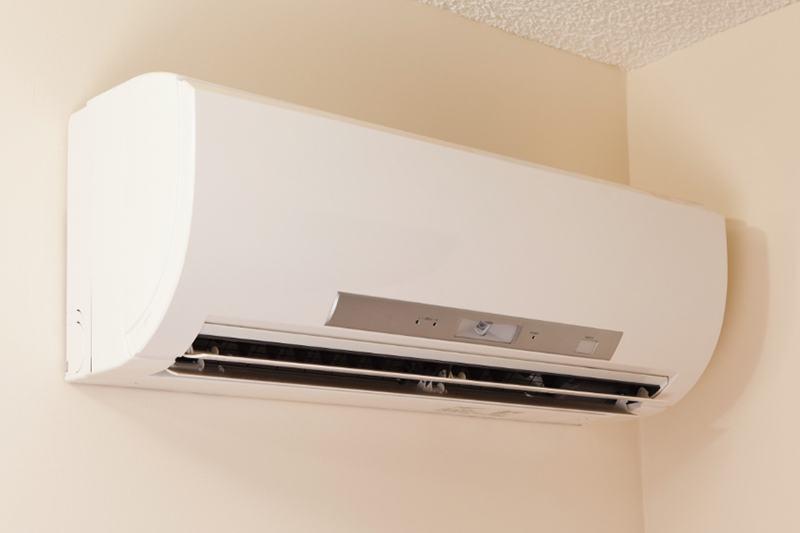How Does a Ductless AC Work?

If you’re looking for a flexible, efficient way to heat and cool your home or office in Oro Valley without the hassle of ductwork, a ductless AC system—also known as a mini split—might be the perfect solution. These systems are gaining popularity for their energy efficiency, quiet operation, and the ability to customize comfort room by room.
But how exactly do they work, and what makes them different from traditional HVAC systems?
Here’s everything you need to know about ductless systems: what they are, how they function, and whether one might be right for your space.
What Is a Ductless AC System?
As the name suggests, a ductless system provides heating and cooling without using ducts to distribute air. Instead of a central air handler pushing conditioned air through a network of vents, ductless systems deliver air directly into individual zones or rooms.
A typical ductless system includes two main components:
- An indoor unit (or multiple units) mounted on a wall or ceiling inside the space.
- An outdoor condenser unit, similar to what you’d see with a central AC system.
These components are connected by a small conduit that houses the refrigerant lines, power cable, and drainage tubing. Because the system doesn’t rely on ductwork, installation is usually quicker and less invasive, making it ideal for older homes without existing ducts or spaces like garages, additions, or older buildings.
How Does a Ductless System Work?
Despite the simpler setup, ductless systems operate using the same fundamental principles as traditional air conditioners or heat pumps. Here’s how it works, step by step:
1. Refrigerant Transfer for Heating and Cooling
At the core of a ductless system is a heat pump, which can reverse its operation depending on whether you want to heat or cool the space.
- In cooling mode, the indoor unit absorbs heat from inside the room and sends it to the outdoor unit, where it’s released outside.
- In heating mode, the system reverses direction. The outdoor unit extracts heat from the outside air, even in cold temperatures, and brings it indoors.
This process is made possible through refrigerant lines that move the heat from one location to another. No fuel is burned, making ductless systems an energy-efficient alternative to traditional furnaces.
2. Zoned Comfort Control
Each indoor unit in a ductless system is controlled independently. That means you can set different temperatures in different rooms—or even turn off units in rooms you’re not using. This is often referred to as HVAC zoning and it’s one of the biggest advantages of ductless.
Whether you want the kitchen cooler, the bedroom warmer, or the guest room off entirely, a ductless system gives you that flexibility in Oro Valley.
3. Quiet, Direct Operation
Because the air is delivered directly from the wall- or ceiling-mounted unit, there’s no noise from rattling ducts or distant vents. The indoor units are designed to run quietly, making them great for bedrooms, offices, or living spaces.
Where Do Ductless Systems Work Best?
Ductless systems are versatile and can be installed in a wide range of spaces. Here are a few situations where they shine:
- Homes without existing ductwork – especially older houses or Oro Valley homes with boiler/radiator systems.
- Room additions or garage conversions where extending the central HVAC would be too expensive or difficult.
- Detached structures like workshops, guest houses, or pool houses.
- Multi-family or rental units where individual climate control is a must.
- Homes looking to improve energy efficiency through zoning and targeted heating/cooling.
Some homeowners also use ductless systems as a supplement to their existing HVAC setup—for example, installing a mini-split in a hard-to-cool upstairs bedroom or a frequently used sunroom.
Advantages of Going Ductless
There’s a lot to like about ductless systems, especially when it comes to energy efficiency and control. Here are a few key benefits:
- Lower energy bills: Because air isn’t lost through leaky ducts and you’re only conditioning the rooms in use, ductless systems often consume less energy.
- Easy installation: Without the need for extensive ductwork, installation is faster and less disruptive.
- Zoned temperature control: Customize the climate in each room to match your comfort needs.
- Improved indoor air quality: Many ductless systems include multi-stage filtration that reduces allergens, dust, and bacteria.
- Quiet performance: Both the indoor and outdoor units are quieter than traditional systems.
Is Ductless Right for Your Home?
Like any HVAC system, ductless options aren’t perfect for every situation. Here are a few things to consider:
- Upfront cost: While installation can be cheaper than adding ducts, ductless systems can be more expensive per unit compared to a traditional central system.
- Aesthetics: Some people don’t like the look of the mounted indoor units on the wall or ceiling, though modern designs have become more aesthetically pleasing and discreet.
- Maintenance: To maintain efficiency, you’ll need to clean or change the filters regularly and schedule occasional service, just like any HVAC system.
Learn More Today
A ductless AC system offers a powerful combination of efficiency, flexibility, and personalized comfort, especially in spaces where traditional systems fall short. Whether you’re upgrading an older Oro Valley home, converting a basement, or just looking to cut energy costs, ductless mini splits are worth a close look.
They’re quiet, effective, and easier to install than many people think. If comfort and control are top priorities for your space, going ductless might be the smartest move you make. Call Hamstra Heating & Cooling, Inc at 520-629-9833 or request service online to schedule your free consultation.
